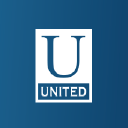/ factorpad.com / stocks / f95wgt.html
An ad-free and cookie-free website.
Our quantitative data points are meant to provide a high-level understanding of factors in equity risk models for United Community Banks/Ga. Portfolio managers use these models to forecast risk, optimize portfolios and review performance.
We show how UCBI stock compares to 2,000+ US-based stocks, and to peers in the Finance and Insurance sector and Commercial Banking industry.
Please do not consider this data as investment advice. Data is downloaded from sources we deem reliable, but errors may occur.
 United Community Banks, Inc. is a bank holding company headquartered in Blairsville, Georgia, with executive offices in Greenville, South Carolina. United is one of the largest full-service financial institutions in the Southeast, with $17.8 billion in assets, and 160 offices in Florida, Georgia, North Carolina, South Carolina and Tennessee. United Community Bank, United's wholly-owned bank subsidiary, specializes in personalized community banking services for individuals, small businesses and companies throughout its geographic footprint, including Florida under the brand Seaside Bank and Trust. Services include a full range of consumer and commercial banking products, including mortgage, advisory, treasury management, and wealth management. Respected national research firms consistently recognize United for outstanding customer service. In 2020, J.D. Power ranked United highest in customer satisfaction with retail banking in the Southeast, marking six out of the last seven years United earned the coveted award. United was also named 'Best Banks to Work For' by American Banker in 2020 for the fourth year in a row based on employee satisfaction. Forbes included United in its inaugural list of the World's Best Banks in 2019 and again in 2020. Forbes also recognized United on its 2020 list of the 100 Best Banks in America for the seventh consecutive year. United also received five Greenwich Excellence Awards in 2019 for excellence in Small Business Banking and Middle Market Banking, including a national award for Overall Satisfaction in Small Business Banking.
United Community Banks, Inc. is a bank holding company headquartered in Blairsville, Georgia, with executive offices in Greenville, South Carolina. United is one of the largest full-service financial institutions in the Southeast, with $17.8 billion in assets, and 160 offices in Florida, Georgia, North Carolina, South Carolina and Tennessee. United Community Bank, United's wholly-owned bank subsidiary, specializes in personalized community banking services for individuals, small businesses and companies throughout its geographic footprint, including Florida under the brand Seaside Bank and Trust. Services include a full range of consumer and commercial banking products, including mortgage, advisory, treasury management, and wealth management. Respected national research firms consistently recognize United for outstanding customer service. In 2020, J.D. Power ranked United highest in customer satisfaction with retail banking in the Southeast, marking six out of the last seven years United earned the coveted award. United was also named 'Best Banks to Work For' by American Banker in 2020 for the fourth year in a row based on employee satisfaction. Forbes included United in its inaugural list of the World's Best Banks in 2019 and again in 2020. Forbes also recognized United on its 2020 list of the 100 Best Banks in America for the seventh consecutive year. United also received five Greenwich Excellence Awards in 2019 for excellence in Small Business Banking and Middle Market Banking, including a national award for Overall Satisfaction in Small Business Banking.
Many of the following risk metrics are standardized and transformed into quantitative factors in institutional-level risk models.
Rankings below represent percentiles from 1 to 100, with 1 being the lowest rating of risk.
Stocks with higher beta exhibit higher sensitivity to the ups and downs in the market. (↑↑)
Stocks with higher market capitalization often have lower risk. (↑↓)
Higher average daily dollar volume over the past 30 days implies lower liquidity risk. (↑↓)
Higher price momentum stocks, aka recent winners, equate to lower risk for many investors. (↑↓)
Style risk factors often include measures of profitability and payout levels.
Companies with higher earnings generally provide lower risk. (↑↓)
Companies with higher dividend yields, if sustaintable, are perceived to have lower risk. (↑↓)
/ factorpad.com / stocks / f95wgt.html
A newly-updated free resource. Connect and refer a friend today.